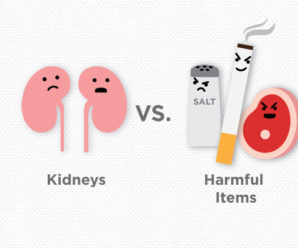
We all have a normal forward bend in our spine, but for about 2-4 percent of adolescents, their spine also bends side to side or twists due to a condition called scoliosis.
While scoliosis was one of the first medical conditions ever documented, there are still many unknowns about the condition.
1. Most scoliosis cases have no cause
Patients with scoliosis commonly have idiopathic scoliosis, which means there is no known cause for their scoliosis.
“It is thought that there is a combination of the interactions with the nerves, the muscles and the bones as someone grows,” said. Dr. Jacob Lonsdale, a pediatric orthopedist with Marshfield Clinic Health System.
Doctors do know that idiopathic scoliosis worsens while a child is growing and it can run in families. It is not associated with tumors, nerve issues, broken bones, too much time on the computer, weight or height.
A congenital issue, neurologic issue, tumor, connective tissue disease or genetic issue separate from idiopathic scoliosis can cause other types of scoliosis. These different types of scoliosis are treated differently than idiopathic scoliosis, so it is important to rule out these causes.
2. Scoliosis is measured in degrees
You measure scoliosis just like you would an angle. A 0-degree curve would be a perfectly straight back, while a 90-degree curve would cause a back to curve like a 90-degree angle.
“We define it by how much curve is in the back,” Lonsdale said.
Severity for scoliosis falls into three levels:
- Mild: A 10-25 degree curve
- Moderate: A 26-45 degree curve
- Severe: Above a 45-degree curve
3. You can still be active with idiopathic scoliosis
While you would think idiopathic scoliosis would be painful or cause functional issues, typically you can continue to be active.
“For someone who has idiopathic scoliosis, they are not at risk for hurting their back. They can participate in regular athletics, dance or other active activities,” Lonsdale said.
It isn’t until you get into the severe range for scoliosis that you can begin to have issues with pain, function and well-being.
“For most people, once they stop growing, the scoliosis stops changing,” Lonsdale said. However if they are in a severe range, the curve does continue to progress as they get older.”
4. Not all schools do scoliosis checks
While many schools do scoliosis checks, some schools do not check for the condition.
Your child’s pediatrician is the best person to diagnose and talk to about scoliosis. Lonsdale also recommends checking between check-ups because a curve can form quickly. You should also check more often if you have family history of scoliosis.
To check, have them bend over. If anything looks odd or you see a bump from ribs sticking out, you should have your child checked by their pediatrician.
5. You cannot undo scoliosis
While you can treat or fix most conditions, you cannot reverse scoliosis.
Our expectations for any treatment is to prevent progression, not correct it,” Lonsdale said.
Standard interventions such as bracing or the Schroth method can only stop the scoliosis from getting worse. It cannot fix the problem. Surgery can reduce the curve as long as it is done when the spine is flexible.
Chiropractic care has not been fully studied for scoliosis and has not shown to reduce a scoliosis curve. Lonsdale encourages patients to talk with their chiropractor about what type of improvements they should expect to make an informed decision.
For more information about scoliosis, talk to your child’s pediatrician.







Leave a Reply